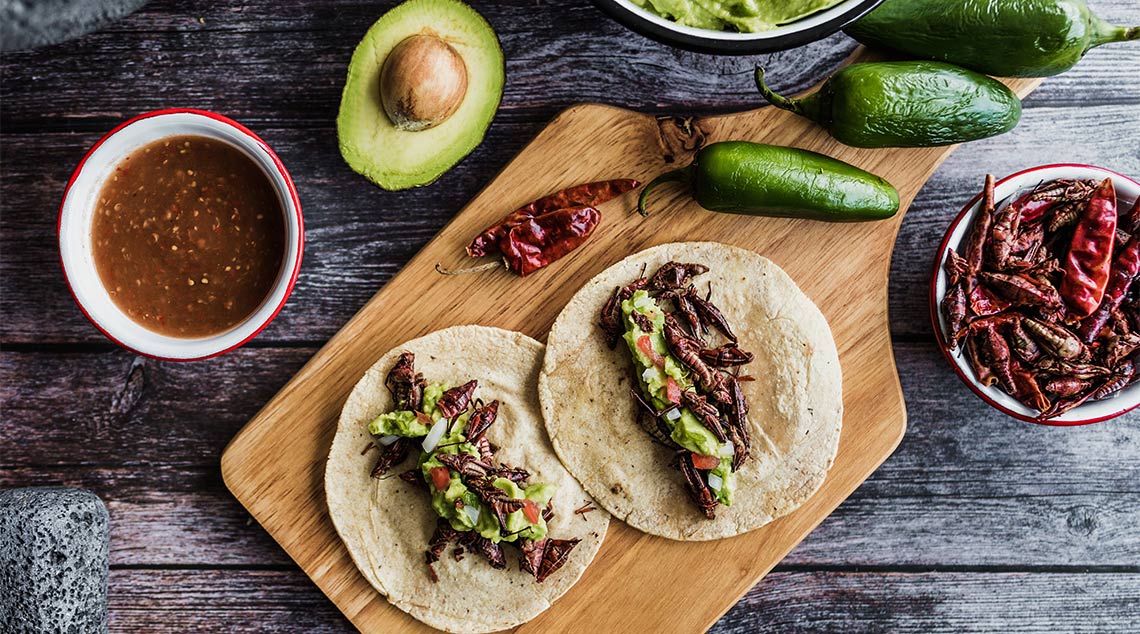Would you eat bugs? Here’s why experts say you should
From protein-packed crickets to vitamin-rich witchetty grubs, edible bugs are a sustainable and nutritious food source that deserves a place in your diet.
While bugs don’t typically make mouths water and stomachs grumble with hunger, experts say edible insects can make a nutritional and versatile addition to your diet – and they’re more appetising than you may think.
It may also come as a surprise to learn that you may already have eaten insects – for example, red food colouring (carmine) is made from crushed bugs.
There are also plenty of new bug-based products becoming available that can boost your brownie batter or add crunch to your pizza toppings.
Here’s what you’ll want to know about eating insects, plus the best edible bugs to try.
How to include edible bugs in your diet
According to CSIRO research scientist Dr Rocio Ponce-Reyes, more than 2100 insect species are currently eaten by two billion people from 130 countries – a fact she says highlights the vast culinary possibilities of edible insects.
“There are numerous creative and delicious ways insects can be consumed, such as adding roasted crickets or mealworms to salads for a crunchy texture, (eating) flavoured roasted insects as a snack, or maybe incorporating insect flour into baked goods,” Dr Ponce-Reyes says.
From cricket corn chips and roasted mealworms to ant candy and ant seasoning, entomologist and Edible Bug Shop founder Skye Blackburn has created a range of innovative insect-based products to help more Aussies get on the edible bug bandwagon.
“Most people think that you have to be staring at legs and wings to be enjoying the benefits of insect proteins, when that is not the case,” Skye, who is also a food scientist, says.
These products are versatile, and can become like any other go-to ingredients in the kitchen.
“There are so many ways you can add invisible insect proteins in the form of powders, oils and pastes,” Skye says.
“And these kinds of foods look and taste the same as the regular version.”
Why should edible bugs be part of the menu?
They may be small, but insects pack in plenty of protein, vitamins, minerals and healthy fats that Dr Ponce-Reyes says can contribute to a well-rounded diet.
“While insects can be a primary protein source, incorporating them into our diet as a complementary protein source ensures a diverse nutrient intake,” she suggests.
Not only good for your body, this natural food source is also good for the environment.
“Insects are considered a sustainable food source due to their potentially low environmental impact,” Dr Ponce-Reyes says.
“They require less land, water and feed compared to traditional livestock, and can be farmed in urban areas, requiring less transportation.”
From creation to consumption, insect-based products leave a small environmental footprint.
“Insects are also very nutrient-dense, so you don’t need to have big servings to get the nutritional benefits,” Skye adds
Best Australian edible bugs
Insects abound in Australia, that’s no secret.
But beyond all those pesky mosquitoes and annoying flies are a range of flavourful and nutritious edible bug species – there are more than 60 native insect species that, according to the CSIRO’s 2019 report on edible insects, are traditionally consumed by Australia’s First Nations Peoples.
“Insects have been consumed in Australia for more than 40,000 years by First Nations People,” Dr Ponce-Reyes says.
“Some native Australian insect species include witchetty grubs, bogong moths, green tree ants and honey pot ants.”
With different species come different flavours that can add a protein boost to your meals or stand alone as a tasty, nutritious snack.
“Witchetty grubs are often described as nutty or buttery; bogong moths have a subtle, nutty flavour; green tree ants provide a zesty taste; and honey pot ants offer a sweet and tangy flavour,” Dr Ponce-Reyes says.
Read more on unusual foods and sustainable eating:
- Surprising foods we’ll be eating in the future
- Bush tucker: Why you need native ingredients in your kitchen
- Offal is back on the menu – and it’s a nutritional hit
- Can the ‘climatarian diet’ help save the planet?
- Why seasonal eating is better for you – and the planet
Written by Hayley Hinze.





